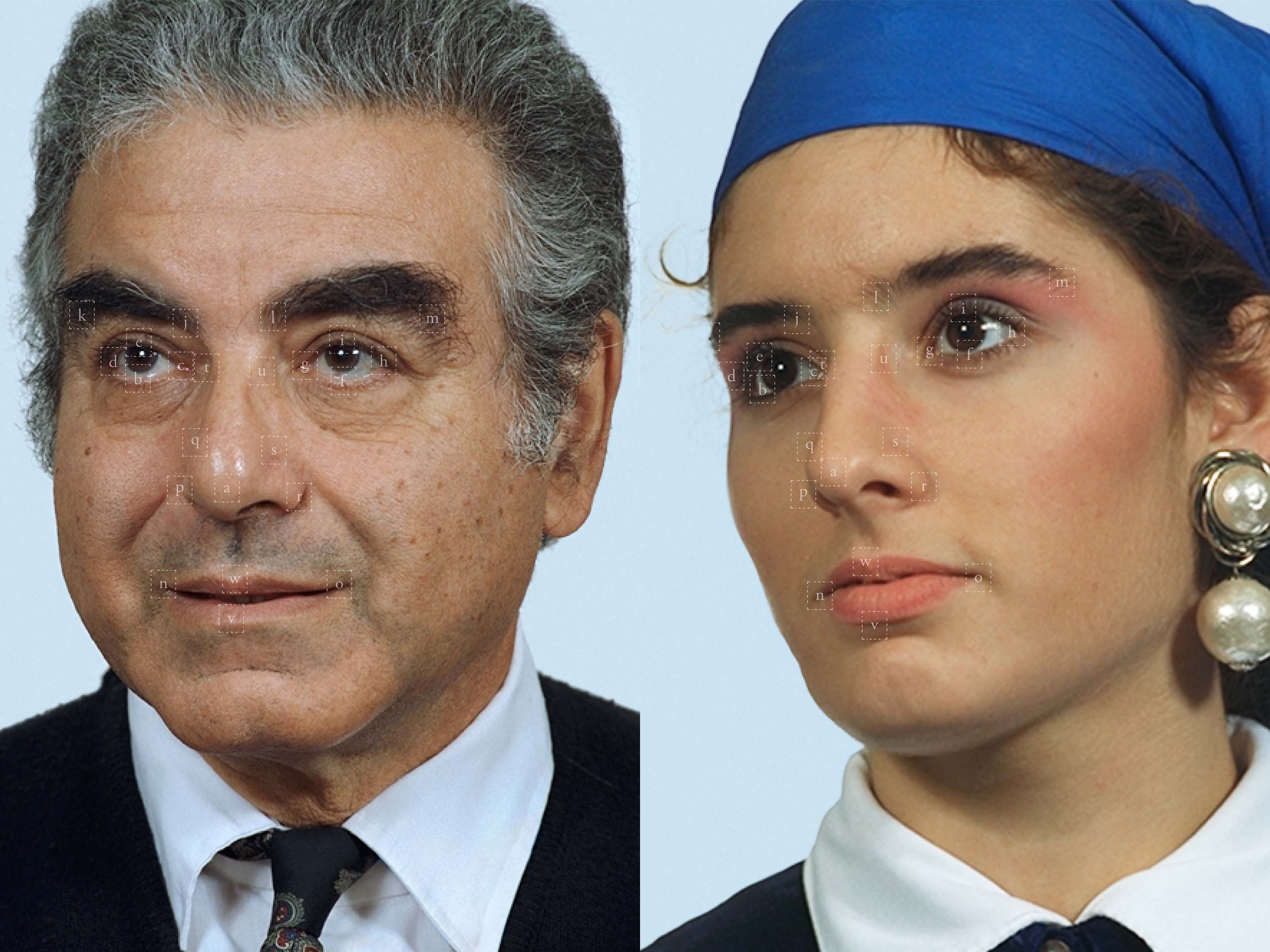For nearly 20 years, the Belgian artist Michaël Borremans has been producing a surreal body of work in painting, drawing, and film that simultaneously mines contemporary image-making and the history of art—The Angel, a painting from 2013 for example, recalls fashion photography (Belgian model Hannelore Knuts served as the muse) as well as portraits by artists like Velazquez, Goya, and Manet. Document previously published a portfolio of the artist’s hauntingly beautiful paintings. Last month, “Michaël Borremans: As sweet as it gets”, the first solo show of the artist’s works in all mediums, opened at the Dallas Museum of Art. Drew Sawyer sat down with curator Jeffrey Grove to discuss Borremans’ practice and why he’s finally getting a major survey in the U.S.
Drew Sawyer—It’s been a busy few years for you. You’ve carried out large survey exhibitions on several major artists who may seem quite disparate at first. I was wondering what attracted you to Michaël Borremans’ work and if you see a connecting thread between him, Isa Genzken, and Jim Hodges?
Jeffrey Grove—That’s a good question. I was doing these three fairly simultaneously, and I suppose I asked myself that at some point. I realized that from the outside looking in, one could see these as three incredibly disparate artists. I was actually talking to Olivier Meslay, chief of curatorial affairs [at the Dallas Museum of Art], at the time when I was arguing for the exhibitions and he completely got it. I had to interrogate for myself: if there was any linkage what it would be. It was interesting that it was right in front of me that each of these artists—in different ways—is really engaged with a deep history of their particular practice. I think that Isa and Jim could arguably be considered to be primarily sculptors. And then most people think of Michaël as a painter, but he thinks of himself as a sculptor too; he references his work—whether it’s film or painting—in sculptural terms. Also with very few exceptions and only with Jim more recently, each of them has over a long period of time worked almost exclusively alone in the studio with very little help. So there’s this dedication to making that each of them exhibits in their work over a long period of time. Beyond the aesthetic issues and some of the intellectual issues, those are maybe commonalities.
Drew—You organized a previous exhibition. What initially drew you to Michaël’s work?
Jeffrey—Yes, it debuted in 2004 in Basel and traveled to the Cleveland Museum of Art, where I was an associate curator. I had probably first become engaged with Michaël’s work a few years before that, almost from the time he began to show outside of Ghent. It was really an immediate response that I think a lot of people share when they first see his work: [his work] seems firmly about a certain place in time but also completely beyond these associations. It seemed very clearly informed by an attention to the history of painting. As someone who has worked in institutions with great historic collections, I’ve always been interested in contemporary art that actively engaged in such a dialogue. That was probably the first spark with Michaël. And getting to know the work better, I was drawn to his love of drawing. At that time he was both a painter and a draftsman. In recent years, people are much more familiar with him as a painter than they are as a draftsman, even though it continues to be a craft in itself. But I think the resonance with the history of painting was something completely disconcerting and utterly contemporary—a little bit more difficult to pinpoint than some of his peers.
Drew—Speaking of peers, you’ve also been involved in exhibitions on the work of Luc Tuymans? Both are amongst the most well-known contemporary figurative painters and happen to be Belgian as well. Do you think there’s a reason for this?
Jeffrey—I was thinking about this in a context of another question not that long ago. Geographically Belgium’s location is really the center of Western Europe. It’s not just applicable for the history of the 20th century when the country became a crucible of politics. The position between the North and the South has been important from the Renaissance and the golden age of painting forward. There is just a different history and cultural relationship to painting like the Surrealists in the early 20th century. Think of all the figures who resonate today—they are all from this very small country.
Drew—Masters like Peter Paul Rubens come to mind, but also Magritte and James Ensor.
Jeffrey—And the list goes on. Belgium has always been an art center for Europe. There are probably more artists living in Belgium who are active on the international scene than many other places nowadays. So I think it is a combination of cultural and political history, and the way in which art history has been constructed and taught in the country. I was with Michaël one day and we went to S.M.A.K. (the Municipal Museum of Contemporary Art in Ghent) because some of the works we were borrowing for the show were on view, and little kids ran up to him, because he’s a national figure and on TV. There is just such a higher engagement with visual art.
Drew—He’s become quite well-known in a fairly short amount of time. Most of the works in the exhibition were produced after 2000. I’m curious to know more about Michaël’s trajectory. Did he come to his art practice somewhat later in life or was there an earlier process that he moved away from?
Jeffrey—Yes [Laughs]. Yes and yes. He was trained as an engraver, and he was primarily a teacher. Well into his 30s, he was becoming dissatisfied with teaching. I think he had given up on the idea of being an artist at this place in his life but then decided that’s not good enough. He was really determined to be an artist of some importance because he cared about it. He had always drawn but not in a very dedicated kind of engagement. He became very proactive in getting attention brought to his work; he reached out to people and it was almost immediate because he was so good. He was already 37 by the time he started showing. That’s mature for an artist today.
Drew—As you mentioned, he started as a draftsman and then moved into painting. Now more recently, he has been making films. The exhibition includes almost an equal amount of drawing and painting.
Jeffrey—They’re fairly well balanced.
Drew—Do you see a clear relationship between his practices in various media? I was struck by the repetition of subjects across them all.
Jeffrey—I’m glad that Michaël agreed to include them all. He really thinks of them as interrelated, surely, but independent practices. What’s unusual with Michaël is you might see a film like The Weight, but that film didn’t inspire drawings and paintings of similar imagery that came after. So, it’s not like one was a study for another. Some drawings he often calls “proposals for sculpture” so they’re not working drawings, but they’re an idea he gives to turn into something else. He’s very much interested in the technical issues of how to make a painting or how to make a drawing, as opposed to the construction of a sculpture. That’s why you’ll see these, and I’m glad we are able to present them. They’re sequences, they’re not sequential works, because there’s not necessarily an “a gets b, b gets c” logic behind them.
Michaël Borremans: As sweet as it gets, curated by Jeffrey Grove is on view at the Dallas Museum of Art until July 5, 2015


















